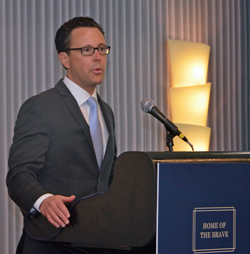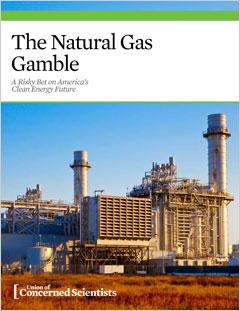 Trina Solar Limited has announced that its Trinasmart panels are now part of the technology solution that Vivint Solar, Inc. offers to its customers. Trina Solar touts Trinasmart as a module-integrated solution that optimizes the energy output of PV systems, enhances solar array safety, improves installation speeds and reduces balance of system costs.
Trina Solar Limited has announced that its Trinasmart panels are now part of the technology solution that Vivint Solar, Inc. offers to its customers. Trina Solar touts Trinasmart as a module-integrated solution that optimizes the energy output of PV systems, enhances solar array safety, improves installation speeds and reduces balance of system costs.- Yes! Solar Solutions has partnered with Dividend Solar to offer the $0-down EmpowerLoan in North Carolina for the first time. The full-service solar loan includes energy production guarantees, warranty management, hassle-free maintenance and performance monitoring at no additional cost – all with the significant financial upside of solar ownership.
- First Solar, Inc. and SunPower Corp. have announced that 8point3 Energy Partners LP, a limited partnership formed by First Solar and SunPower to own and operate a portfolio of selected solar generation assets, has filed a Registration Statement on Form S-1 with the Securities and Exchange Commission (SEC) for an initial public offering (IPO) of Class A shares representing limited partner interests in 8point3 Energy Partners. The number of shares to be offered and the initial public offering price of the shares have not yet been determined.
- IFC, a member of the World Bank Group, has launched the Lighting Africa program for Nigeria. The program, a joint initiative of IFC and the World Bank, will help increase access to affordable, clean and safer lighting for more than 30 percent of Nigeria’s population who live in rural areas, and have low incomes and no access to grid electricity.
U.S. Solar Market Insight 2014 Hot off the Press
The latest U.S. Solar Market Insight 2014 Year in Review has been released and solar had another banner year. Newly installed solar photovoltaic (PV) capacity for the year reached a record 6,201 megawatts, more than 30 percent higher than in 2013. An additional 767 MW of concentrating solar power (CSP) also came online during 2014. Solar accounted for 32 percent of the nation’s new generating capacity in 2014, beating out both wind energy and coal for the second year in a row. Only natural gas constituted a greater share of new generating capacity. The report was released by GTM Research and the Solar Energy Industries Association (SEIA).
The solar industry broke the gigawatt (GW) level in 2011 and in 2014, 3.9 GW of utility-scale sized solar power projects came online with an additional 14 GW under contract. The commercial segment in the U.S. also first installed more than 1 GW  in 2011 but has not shared the same success as the utility-scale segment. In 2014, the commercial segment installed just over 1 GW, down 6 percent from 2013. The report notes, “Many factors have contributed to this trend, ranging from tight economics to difficulty financing small commercial installations.” But GTM Research expects 2015 to be a bounce-back year for the commercial segment, highlighted by a resurgence in California.
in 2011 but has not shared the same success as the utility-scale segment. In 2014, the commercial segment installed just over 1 GW, down 6 percent from 2013. The report notes, “Many factors have contributed to this trend, ranging from tight economics to difficulty financing small commercial installations.” But GTM Research expects 2015 to be a bounce-back year for the commercial segment, highlighted by a resurgence in California.
The U.S. residential segment’s 1.2 GW in 2014 marks its first time surpassing 1 GW. Residential continues to be the fastest-growing market segment in the U.S., with 2014 marking three consecutive years of greater than 50 percent annual growth.
“Without question, the solar Investment Tax Credit (ITC) has helped to fuel our industry’s remarkable growth. Today the U.S. solar industry has more employees than tech giants Google, Apple, Facebook and Twitter combined,” said Rhone Resch, SEIA president and CEO. “Since the ITC was passed in 2006, more than 150,000 solar jobs have been created in America, and $66 billion has been invested in solar installations nationwide. We now have 20 gigawatts (GW) of installed solar capacity – enough to power 4 million U.S. homes – and we’re helping to reduce harmful carbon emissions by 20 million metric tons a year. By any measurement, the ITC has been a huge success for both our economy and environment.”
GTM Research forecasts the U.S. PV market to grow 31 percent in 2015. The utility segment is expected to account for 59 percent of the forecasted 8.1 GW of PV.
Advanced Biofuels Group Would Reopen RFS
 Advanced Biofuels Association President Michael McAdams today called on Congress to amend the Renewable Fuel Standard (RFS) to strengthen it for the “continued development of the advanced and cellulosic industry.”
Advanced Biofuels Association President Michael McAdams today called on Congress to amend the Renewable Fuel Standard (RFS) to strengthen it for the “continued development of the advanced and cellulosic industry.”
In an address this morning to the 2015 Advanced Bioeconomy Leadership Conference, McAdams said the “RFS simply doesn’t work as well for companies trying to move cutting-edge technology from a demonstration plant to commercial scale.” He called for changes in several areas, including minimum RIN value for cellulosic fuels, extending the program beyond 2022, and removing “the loop hole that allows the oil industry to opt out from buying a cellulosic gallon.”
The idea of reopening the RFS even to make positive changes is opposed by other biofuels organizations. “By opening up the RFS for legislative changes, you are opening a can of worms that will only create further uncertainty for the industry, which is the last thing biofuel producers of any kind need,” said Growth Energy CEO Tom Buis in a statement.
“We seriously question who ABFA is representing these days,” said Renewable Fuels Association president Bob Dinneen in response to a reporter’s question on a conference call this morning. “There’s nothing ABFA has identified as needed improvements to the program that the agency already does not have the authority to address.”
Novozymes president Adam Monroe added that ABFA “does not represent even the majority of advanced biofuels producers” and doesn’t believe their position is representative of the industry. “It’s the politics that are broken not the legislation,” said Monroe.
RFA and Novozymes comment on ABFA call to open RFSBiofuels Leaders Defend RFS
Holding a press conference in advance of the American Petroleum Institute continuing its call to repeal the Renewable Fuel Standard (RFS), representatives of the ethanol and advanced biofuels industry and corn growers defended the law and the fuel.
 Growth Energy CEO Tom Buis said the oil industry is making the same old arguments about ethanol that are simply not true, but he thinks the industry received a good boost over the weekend “when six out of nine of the Republican presidential candidates that came to the Ag Summit expressed support for the RFS.”
Growth Energy CEO Tom Buis said the oil industry is making the same old arguments about ethanol that are simply not true, but he thinks the industry received a good boost over the weekend “when six out of nine of the Republican presidential candidates that came to the Ag Summit expressed support for the RFS.”
National Corn Growers Association (NCGA) first vice president Rob Elliott of Illinois talked about how the facts dispel the perpetual myths about food versus fuel. “Corn prices are now below cost of production … so obviously food prices have not followed a similar path,” he said.
Adam Monroe, president of enzyme producer Novozymes, said if Washington gives in to pressure by the oil industry to weaken the RFS it will keep second generation biofuels from going forward. “It makes it tremendously difficult for us to bring in new investors and spend more money,” he said.
Renewable Fuels Association president Bob Dinneen says no matter what ethanol critics say, there is now real world data that shows no detrimental effects have occurred as a result of the RFS and he encouraged reporters to question API. “Ask them to explain the fact that the price of corn is lower than it was when the RFS was passed,” he said, noting also that food price inflation has been lower, the dead zone has gotten smaller, and hunger worldwide has fallen.
Conference Call with Renewable Fuel Industry LeadersACE Fly-In Coming Soon
 The American Coalition for Ethanol is holding its 7th annual DC Fly-In, also known as the Biofuels Beltway March, on March 24-25.
The American Coalition for Ethanol is holding its 7th annual DC Fly-In, also known as the Biofuels Beltway March, on March 24-25.
ACE executive vice president Brian Jennings says talking to Washington bureaucrats and lawmakers about ethanol is more important than ever. “We’re really going to be focusing on some new members of Congress and educating them on the RFS and E15 in particular,” he said. “There were over 70 new members of Congress elected, and when you look at the current members of Congress, just two in five were in office when RFS2 was enacted back in 2007.”
Members of the ethanol industry who attend the ACE Fly-In hear from members of the administration and discuss many current issues, and then go out in groups to visit members of Congress and their staffs. “Last year we had well over 200 meetings with members of Congress, both sides of the aisle and both houses,” said Jennings, who stressed that they encourage members to “tell their stories” to make an impression.
Jennings says registration is still open for the Fly-In and there is no fee to attend.
Listen to my interview with Brian at the recent National Ethanol Conference: Interview with Brian Jennings, American Coalition for Ethanol
Today Natural Gas Rush, Tomorrow High Bills
According to a new report released today by the Union of Concerned Scientists (UCS), consumers and businesses are becoming increasingly vulnerable to higher electricity bills due to increased natural gas bills. As such, USC calls for more energy efficiency and renewable energy resources like solar and wind to be integrated into the U.S. grid. This would help insulate against economic risks tied to one energy source, while diversify the power energy mix.
“The Natural Gas Gamble,” finds that the power sector is leading the country into a danger zone by favoring natural gas over renewables and energy efficiency options.
“There’s a well-documented history of volatility in natural gas prices,” said Jeff Deyette, senior energy analyst at UCS and report co-author. “Increasing demand, extreme weather  events, and uncertainties about available gas supplies can cause prices to spike dramatically. For example, last winter when the Polar Vortex brought bitter cold to much of the U.S., prices in some regions jumped 10- to 12-times higher than recent lows. Despite the recent surge in natural gas production, these trends could continue and leave consumers that rely on natural gas paying the price.”
events, and uncertainties about available gas supplies can cause prices to spike dramatically. For example, last winter when the Polar Vortex brought bitter cold to much of the U.S., prices in some regions jumped 10- to 12-times higher than recent lows. Despite the recent surge in natural gas production, these trends could continue and leave consumers that rely on natural gas paying the price.”
The analysis also found that if renewables made up a much greater share of the U.S. electricity mix and were combined with investments in energy efficiency, electricity prices would stabilize and consumers would ultimately pay less for their energy. Factoring in the limit on carbon emissions and strong renewable energy and energy efficiency policies at both the federal and state levels, by 2040 renewables could make up nearly 40 percent of the electricity mix and consumers would see an annual net savings of $59 billion (in 2013 dollars).
“Businesses and shareholders may also see their bottom lines negatively affected if utilities continue to expand natural gas in their electricity mix,” Deyette added. “Cleaner-burning natural gas can help in the transition away from coal to cleaner electricity generation sources. However, simply substituting dependence on one fossil fuel for another is a dead end that ultimately limits our ability to slow climate change and safeguard consumers.”
The UCS report concludes that as the nation moves away from coal, enacting a breadth of policies to ensure a diverse supply of low-carbon power sources—made up primarily of renewable energy and energy efficiency, with a more balanced role for natural gas—would protect consumers’ pocketbooks and the environment.
BioEnergy Bytes
 Deinove, a biotech company developing innovative processes for producing biofuels and bio-based chemicals, has announced that its patent, “High-performance metabolic bacteria1”, has been granted in the U.S. This patent covers the biofuel production process from cellulosic or hemicellulosic material – biomass components – by a consolidated bioprocess of degradation and fermentation based on Deinococcus bacteria.
Deinove, a biotech company developing innovative processes for producing biofuels and bio-based chemicals, has announced that its patent, “High-performance metabolic bacteria1”, has been granted in the U.S. This patent covers the biofuel production process from cellulosic or hemicellulosic material – biomass components – by a consolidated bioprocess of degradation and fermentation based on Deinococcus bacteria.- To commemorate International Women’s Day and Beijing +20, the Global Alliance for Clean Cookstoves, the International Center for Research on Women, and ENERGIA will host a high level meeting to address the critical role energy access plays in driving gender equality. Hosted by UN Women, the event will take place during the 59th session of the Commission on the Status of Women, from 1:00 pm to 5:00 pm at the Westin Grand Central in New York, NY. The event is to raise awareness among the global gender community that access to energy is a critical driver of gender equality, is necessary for achieving global gender equality goals and targets, and provides significant opportunities for women’s empowerment.
- The Dutch Research Centre Wageningen UR Food & Biobased Research just released a short biorefinery film that clarifies the key role that biorefinery plays in a bioeconomy. Biorefinery, a process that enables the full and sustainable utilization of biomass. Media and companies struggle to create a clear image of this process to the public. With this film, Wageningen UR aims to create a short and clear understanding of what biorefinery actually is and how it is used to make sustainable biobased products, such as food and feed, materials, chemicals and energy.
- Danish wind turbine manufacturer Vestas Wind Systems (Vestas) has maintained its position as the world-leading wind turbine installer in 2014, having achieved global capacity installations of just over 6,053 Megawatts (MW), according to research firm GlobalData. The company’s latest findings also show that of the world’s top five wind turbine installers in 2014, Siemens has climbed three positions since 2013 into second place.
New USDA Report Shows Ethanol Increasing Efficiency
In today’s monthly World Agricultural Supply and Demand Report (WASDE), corn use for ethanol production was projected 50 million bushels lower based on the new Grain Crushings and Co-Products Production report recently released by the National Agricultural Statistics Service (NASS), citing “a higher rate of conversion than previously assumed” as the reasoning for the adjustment.
“What is most remarkable about this supply and demand report is the light it sheds on a topic of great concern to U.S. corn farmers – recognition of the growing efficiencies in the ethanol industry,” said National Corn Growers Association (NCGA) President Chip Bowling, a Maryland corn farmer. “For many years, we have strongly asserted that the ethanol industry continues to improve and those productivity gains should be taken into consideration. With the simple justification offered for the analysis, USDA made a great step forward in showing its growing appreciation for the advances made in ethanol production and, thus, the ever-increasing benefit it offers Americans.”
While USDA estimates for corn use in ethanol production were lowered by 50 million bushels, the overall drop was partially offset by higher than expected production over the winter months. The demand decline was more than offset by projected increases in demand for corn from the export and feed and residuals markets of 50 million bushels each.
Projected ending stocks were lowered by 50 million bushels in light of the other adjustments. Average farm price estimates were raised by five cents at the midpoint to $3.50 to $3.90 per bushel.
Researchers Combine Biomass, Solar Conversion
In a study published this week in Nature Chemistry, University of Wisconsin-Madison chemistry Professor Kyoung-Shin Choi and postdoctoral researcher Hyun Gil Cha discussed their research to split water into hydrogen, a clean fuel, and oxygen using photoelectrochemical solar cells (PECs).
They developed a novel PEC setup with a new anode reaction. This anode reaction requires less energy and is faster than water oxidation while producing an industrially important chemical product. The anode reaction they employed in their study is the oxidation of 5-hydroxymethylfurfural (HMF) to 2,5-furandicarboxylic acid (FDCA). HMF is a key intermediate in biomass conversion that can be derived from cellulose — a type of cheap and abundant plant matter. FDCA is an important molecule for the production of polymers.
“When we first started this study, we were not sure whether our approach could be really feasible,” Choi says. “However, since we knew that the impact of the study could be high when successful, we decided to invest our time and effort on this new research project at the interface of biomass conversion and solar energy conversion.”
Read more from UMW.
Recovery of China DDGS Market Continues
 Ethanol exports from the United States dropped in January and while distillers grains (DDGS) exports were also lower compared to December, the Chinese market for DDGS is showing recovery.
Ethanol exports from the United States dropped in January and while distillers grains (DDGS) exports were also lower compared to December, the Chinese market for DDGS is showing recovery.
According to Renewable Fuels Association (RFA) vice president Geoff Cooper, U.S. ethanol producers exported 68.7 million gallons of ethanol in January, down 9% from December 2014 and the lowest since September 2014. However, “imports barely registered in January, with only 28,670 gallons coming in from Canada.”
On the DDGS side, exports totaled 708,861 metric tons in January, down 3% from December and still down 22% compared to a year ago. But the good news is that China was the top market for DDGS exports, receiving 24% of the total. Recovery of the Chinese market continues, as January exports to China were 35% above December levels and up dramatically from near zero in November.



